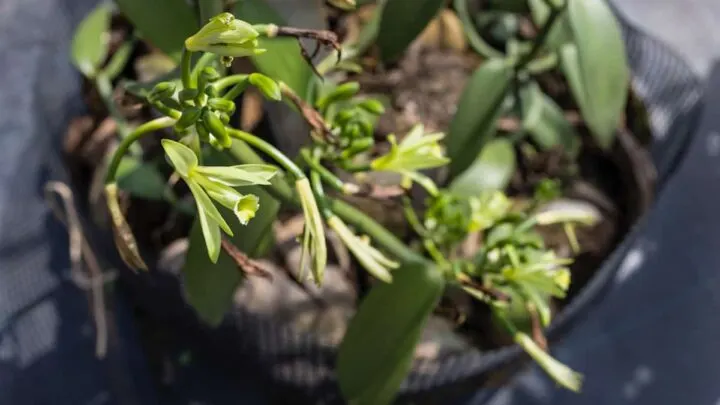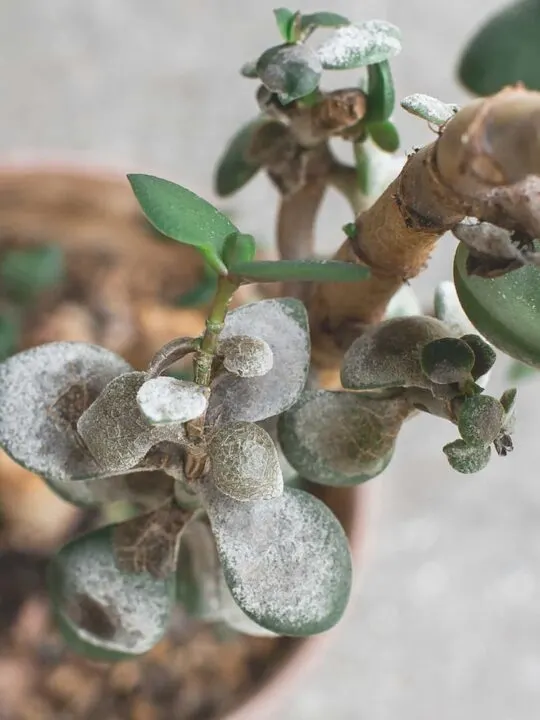As with most species in the plant world, it is not an excellent sign for your plant when your succulent leaves start turning black. While succulents are typically low-maintenance plants that adapt well to many environments and do not need much attention or care, they are still sensitive to the amount of water and other natural resources they receive.
The leaves on a succulent will often start turning black when the plant is overwatered.
Unlike most of your other house plants or even outdoor garden plants, succulents do not need frequent watering, as they are native to the desert, where there is often a scarcity of rain. It is essential to strike the correct balance of watering with your succulent for it to survive.

How To Stop Succulent Leaves from Turning Black?
If you start to see the leaves on your succulent plant turning a dark shade, you can usually correct the problem before your entire succulent plant dies.
To start, do not water your succulent again until the soil feels completely dry to the touch. If you cannot get the soil to dry out, consider repotting your succulent in fresh soil to keep it from sitting in the old soggy soil.
The best way to prevent your succulent from turning black is to be careful not to overwater the plant. Evaluate your current water schedule, and make adjustments to reduce how often you water the succulent.
Succulents typically should be watered once every other week during the non-winter months of the year. In the winter, your succulent plant will likely go dormant if it lives in temperatures under 40 degrees. If this is the case, you do not need to water your succulent more than once a month until the temperatures warm up and the seasons shift into spring.
How Do You Know If A Succulent is Overwatered?
If you are trying to tell if your succulent’s life is in peril, the leaves typically will start turning black from the bottom of the plant first. That is because those leaves are the closest to the roots and are the first to fall susceptible to the effects of overwatering.
If you are struggling to tell if your succulent is overwatered, look out for some of the initial warning signs.
An overwatered succulent may start changing color and will feel extremely wet or soggy to the touch. If you brush a leaf on your succulent and it immediately falls off, that is another big indicator that the plant is getting too much water. Any changes in color or the sudden development of black spots on your succulent are big indicators of overwatering.

Other Reasons A Succulent is Turning Black
There are additional reasons outside of overwatering that might cause your succulent to start turning black.
- Your succulent has root rot. This can be a side effect of overwatering, but it is usually easy to tell if this is happening to your plant as the succulent will stop growing, turn black, and overall look unhealthy. If you pull the succulent up out of the soil and see that the roots have gone mushy, that will confirm that your plant does have root rot.
- Your succulent was not planted in the correct type of soil. While succulents are pretty hearty, they thrive and grow the best when planted in succulent-specific potting mixes. If you go to your local nursery or gardening store, they will be able to point you in the right direction of which soil types are optimal for your particular succulent. A cactus soil mix is usually preferred for succulents.
- Your succulent is potted in the wrong type of container. The pot where your succulent lives can significantly impact whether a plant is healthy or not. The most important aspect of a good pot is drainage. You need the water to be able to drain out the bottom of your pot to prevent root rot or the leaves of your succulent from getting wet and mushy. Typically terra cotta pots are the best for water absorption. If you suspect your succulent doesn’t like the pot it currently lives in, try swapping it out for an appropriately sized terracotta one instead.
- Your succulent was fried by the sun. While succulents are native to the desert, it is still possible for them to get too much sunlight. If a succulent is in full sun in the heat, it may not be able to withstand those conditions. If this happens, you will notice the leaves turning black and the succulent beginning to fade. Some succulents are heartier than others, so be mindful of where you put your succulent to notate what kind of sun it can handle.
- Your succulent did not get enough water. While overwatering is a much more common problem for succulent plants, it is possible to underwater a succulent one. They do need some water to survive, so if a succulent goes months on end without any water hitting its soil, it may begin to show signs of decline. Make sure to keep your succulent on a healthy watering routine that suits your plant’s needs.
- Your succulent could also have been attacked by a bug or developed an illness. Certain pests that attack succulents may cause the leaves to change color or can result in black spots developing on the leaves.
Final Thoughts
Seeing black leaves on a succulent is a warning sign that something is off with your plant. You can often cut off a black leaf on a succulent if it is beyond repair, which will not damage the rest of the plant.
When you see your succulent leaves turning black, spend some time with the plant to figure out what issue your plant is having. Whether it’s overwatering, underwatering, or another problem, usually, these issues can be addressed before it harms your entire plant.
Sources:

Hi there, my name is Allie and welcome to my blog; GareningWithAllie!
Much of what you see written here is just our personal experiences with gardening. Along with the content I write here, there is also a unique collection of gardening topics covered by some of our close friends. I hope you find everything you read here to be helpful, informative, and something that can make your gardening journey the most lovely experience ever! With that said, Happy Gardening!
